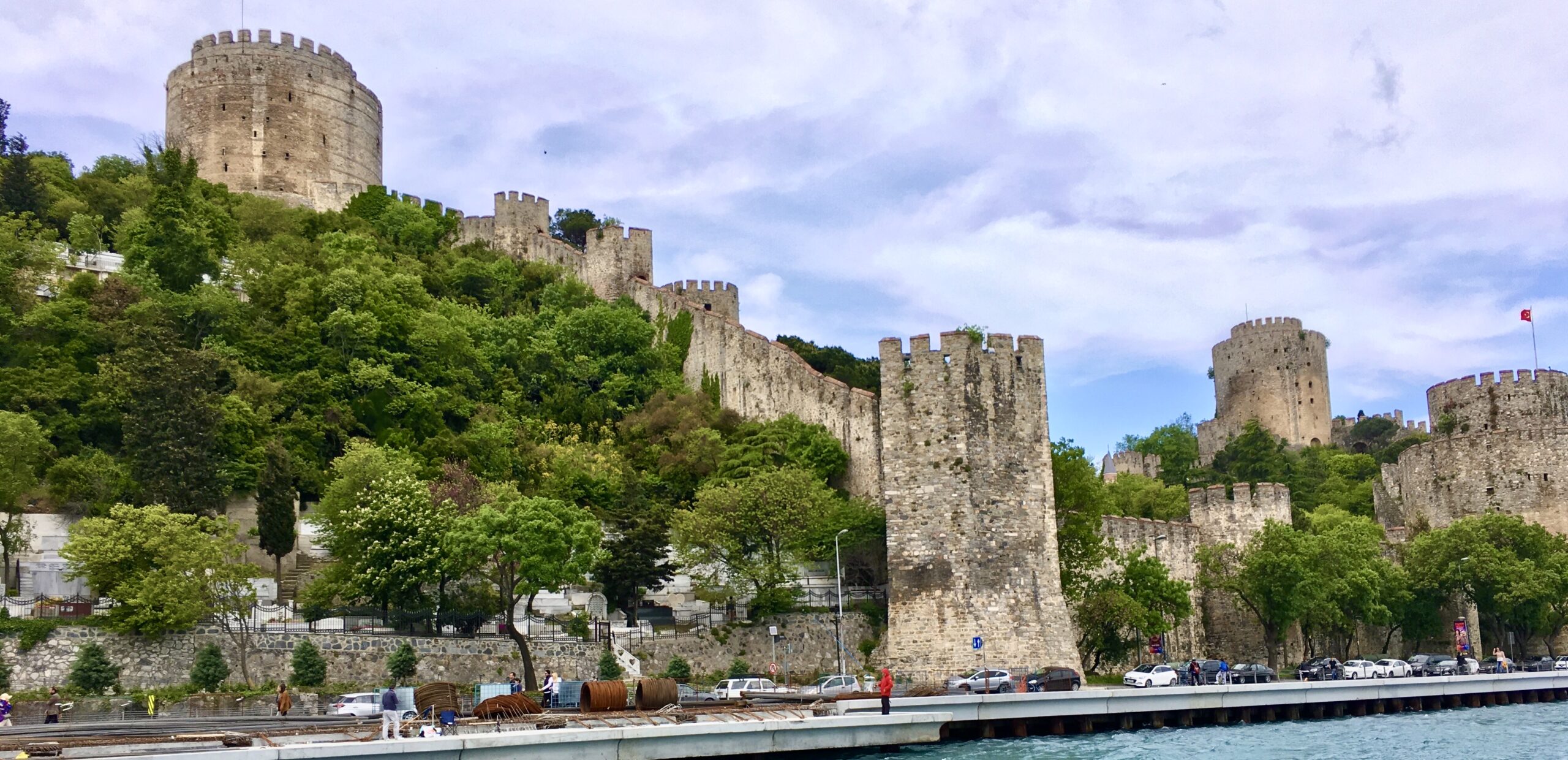If you are travelling northward along the shores of the Bosphorus, whether by a vessel or a car, it is almost impossible not to notice the majestic Castle of Rumelia (Rumeli Hisarı in Turkish) on the European coast. Together with the Anatolia Castle (Anadolu Hisarı in Turkish) right across, on the Asian coast of the Bosphorus, it marks the ultimate aim of the Ottomans to conquer Constantinople. The two castles are also unique in terms of their locations because this is also the narrowest point of the Bosphorus. Becoming approximately 700 metres in width at this point, it is no wonder that the place was considered as a gateway to the opposite shore since antiquity. This was exacly where the great Persian Emperor Darius stood watching his army of 700,000 warriors as they crossed the Bosphorus in 512 B.C. to fight the Scythians. A bridge made of boats was built at this point by the Greek engineer Mandrocles of Samos. It is said that a stone throne was cut out for the Emperor where now stands the north tower of the Rumelia Castle. He sat there to oversee the approach of his army.
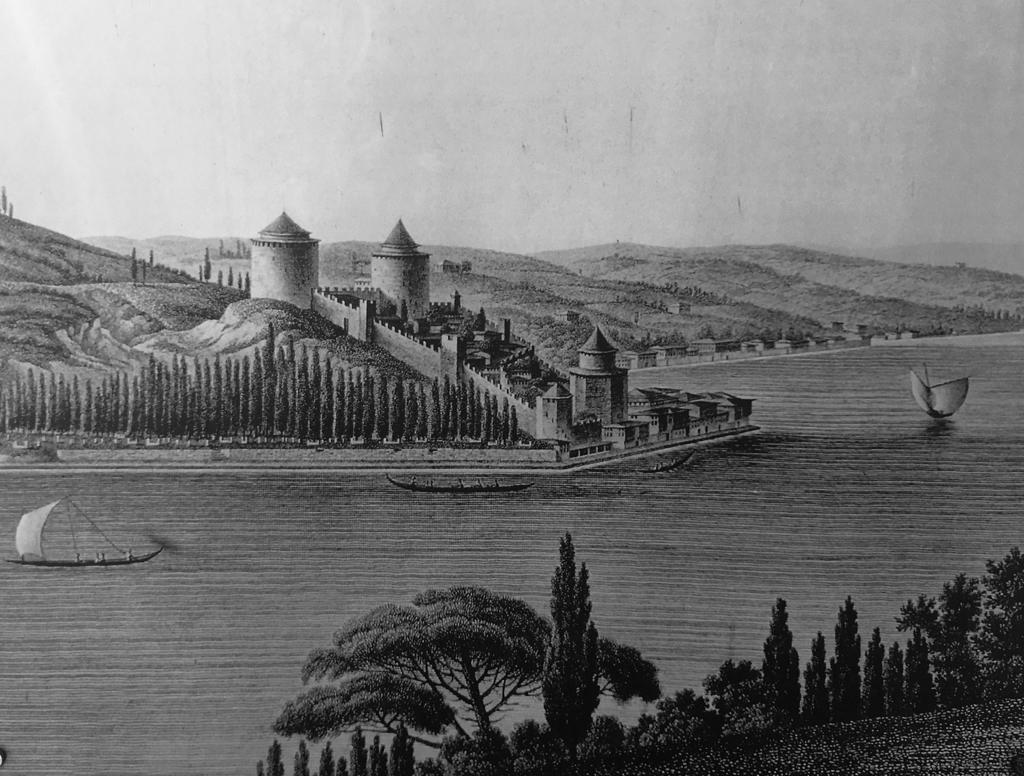
The towers initially had conic roofs
The impressive Castle of Rumelia was built by Sultan Mehmet the Conqueror (1432-1481; r. 1444-1446 and 1451-1481) in 1452. Like his great-grandfather Sultan Bayezid I (1360 (?)-1403; r. 1389-1402), who built the Anatolia Castle 57 years earlier, his aim was to prevent the arrival of any aid from the Black Sea region to Constantinople. This was crucial for the conquest of the city that would take place the following year, in 1453. In fact, the original name of the castle was Boğazkesen in Turkish which means both “cut-throat” and “cutter of the strait”. An amusing pun that serves its purpose.
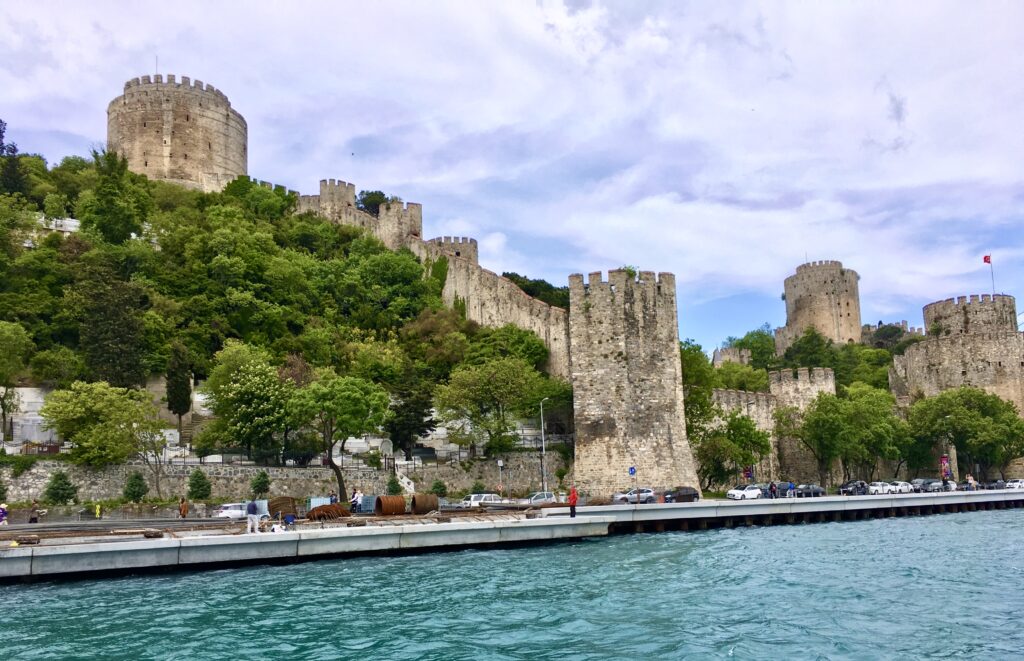
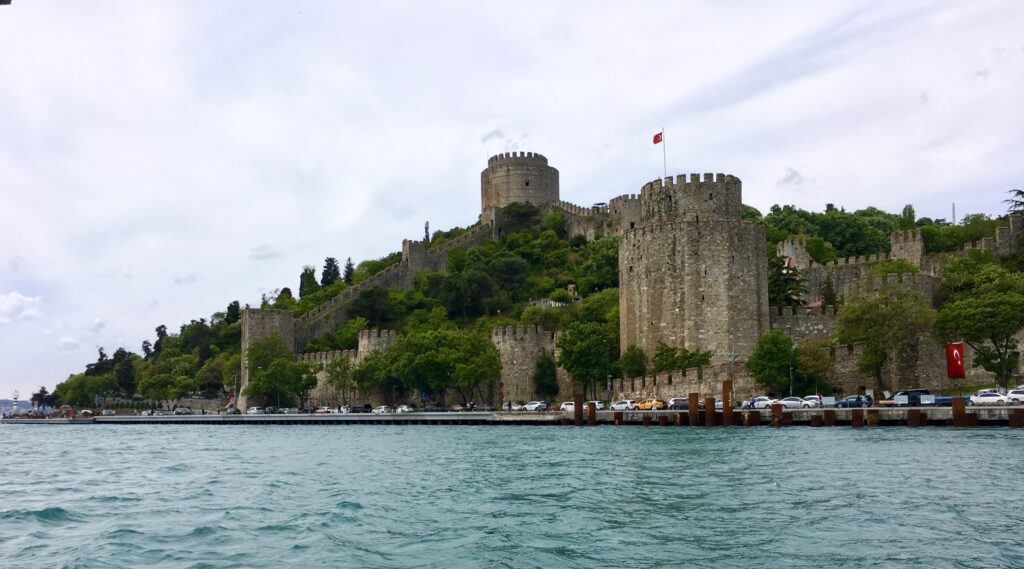
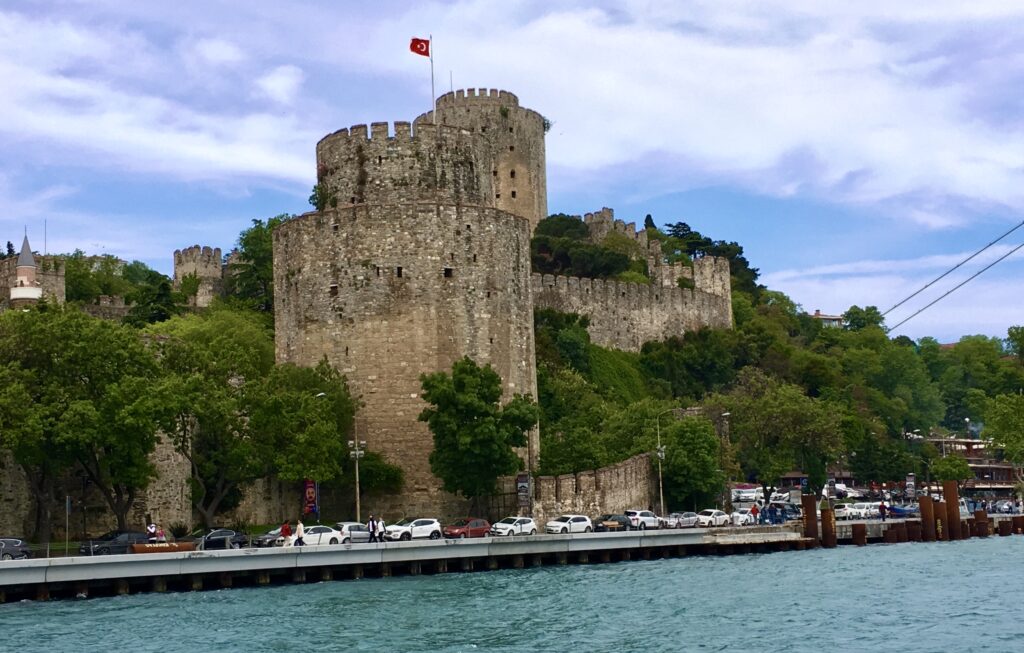
The location of the castle was chosen by Sultan Mehmet II himself. He not only drew the general plan of the castle but frequently supervised the construction as well. It is said that 1000 skilled and 2000 unskilled workers from all over the empire were employed for the construction of this colossal structure. It spans across a deep valley with two tall towers on opposite hills and a third one by the shore where today there is a road. The irregular structure that beautifully befits the topography is 250 metres long and 125 metres wide at its maximum. Despite the false claims of Evliya Çelebi (1611-1682), the renowned Ottoman explorer and traveller, that the plan of the structure is in the shape of the name Muhammed in Kufic letters, the layout of the castle is just a perfect example of harmony with the natural landscape.
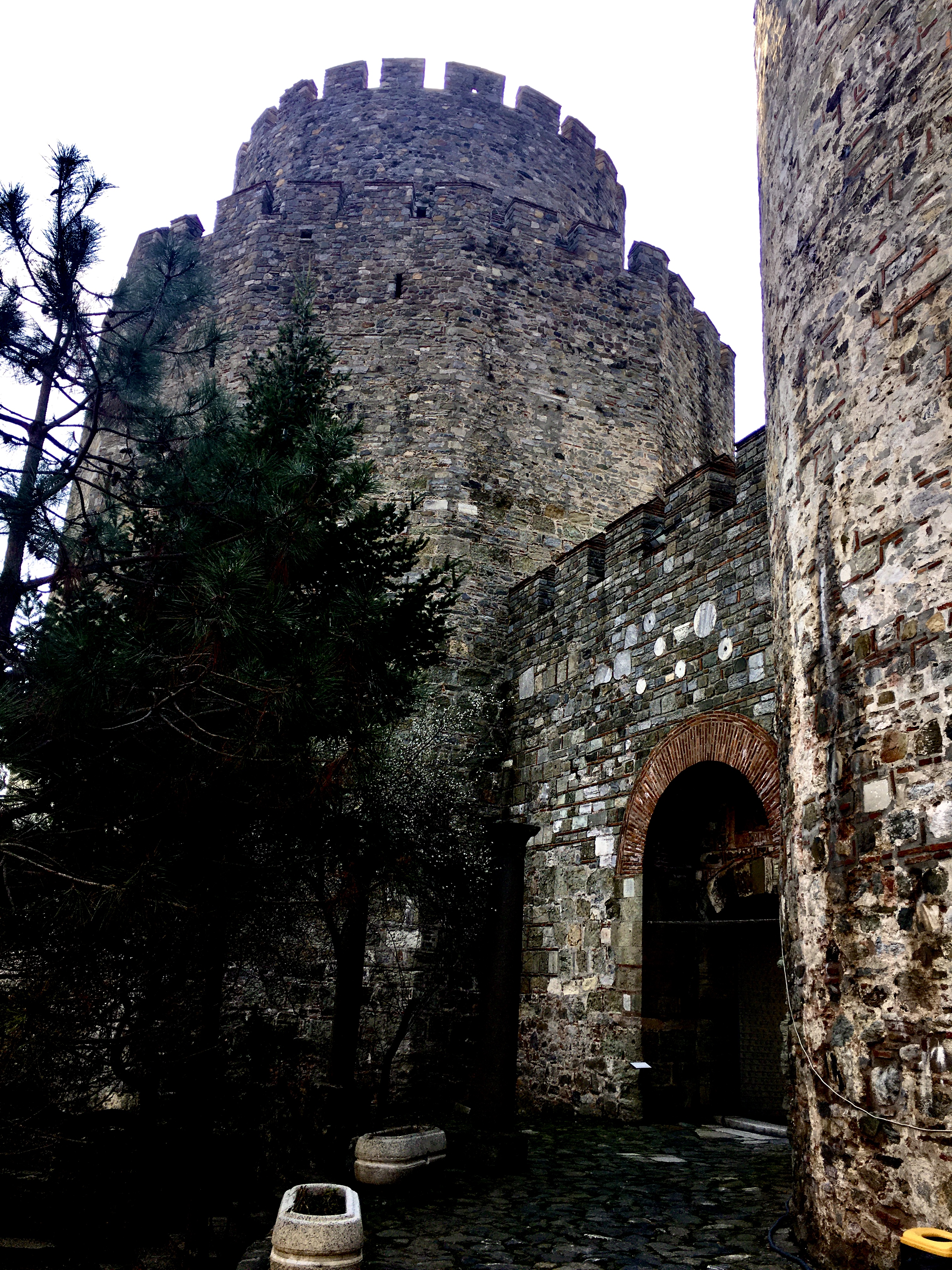
The Rumelia Castle was built in just four months. According to an inscription over the entrance to the south tower, it was completed in July-August 1452. Sultan Mehmet II assigned the construction of each tower to one of his viziers. Facing the castle with your back to the Bosphorus, the tower on the left was given to the responsibility of Zağanos Pasha (21 metres). The tower on the right is the Saruca Pasha Tower. This is also the highest tower of the fortress (28 metres). The tower by the water (22 metres) was built under the responsibility of the Grand Vizier Çandarlı Halil Pasha. No doubt, this competition inflicted by the Sultan among his viziers was an important factor in the speedy completion of the castle. The structure has a curtain wall, with three smaller towers, that joins the three major towers.
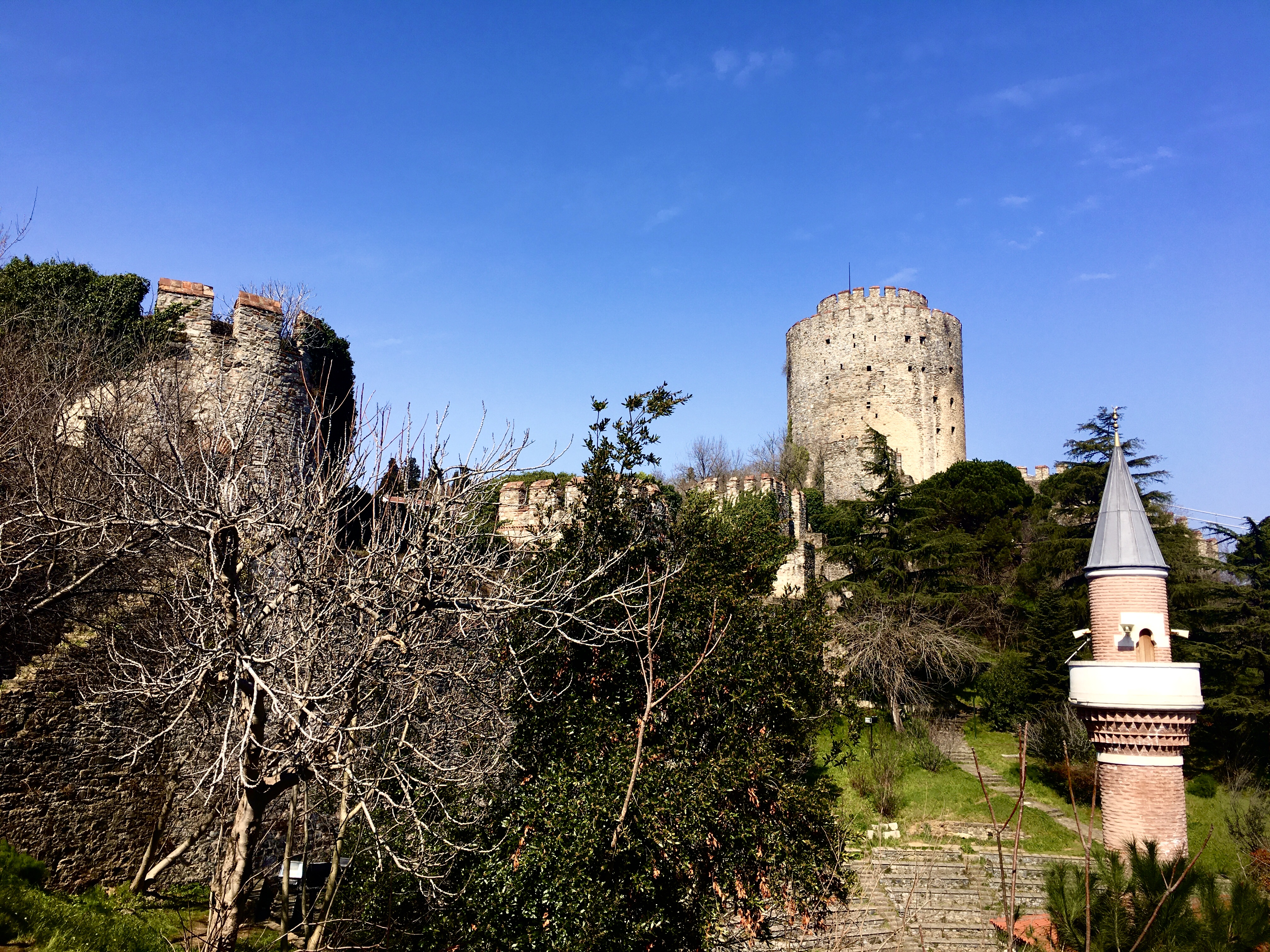
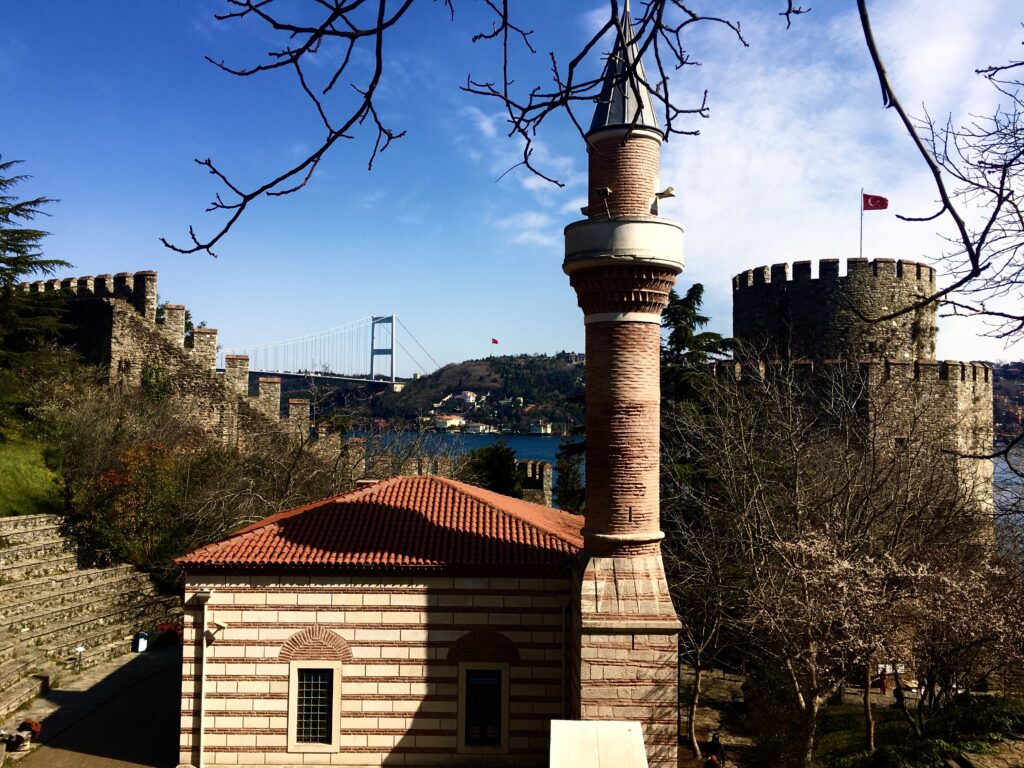
After the conquest the following year, the fortress became dysfunctional in the military context and from then on it was used as a prison, especially for foreign prisoners. The conquest of Constantinople also changed the roles of two of the above-mentioned pashas dramatically. The young Sultan executed his Grand Vizier, Halil Pasha when it became clear that he had been a spy of the Byzantine Emperor all along. Halil Pasha had in fact tried everything in his power to deter the Sultan from conquering the city and had received considerable bribes from the Byzantines for this purpose. Interestingly, during the reign of Sultan Mehmet II’s great- grandfather, Sultan Bayezid I, another Grand Vizier from the same family, Çandarlı Ali Pasha, was also bribed by the Byzantine Emporer to end the siege of Constantinople. Thanks to him, the conquest of the city by the Ottomans was delayed for at least another half a century. However, Sultan Mehmet II was unstoppable. He not only conquered the city but also got rid of his Grand Vizier, Çandarlı Halil Pasha. Zağanos Pasha became the Grand Vizier after his decapitation. He had always greatly encouraged the Sultan, even during his first period of reign (1444-1446) as a child, to rule with more agility and audacity.
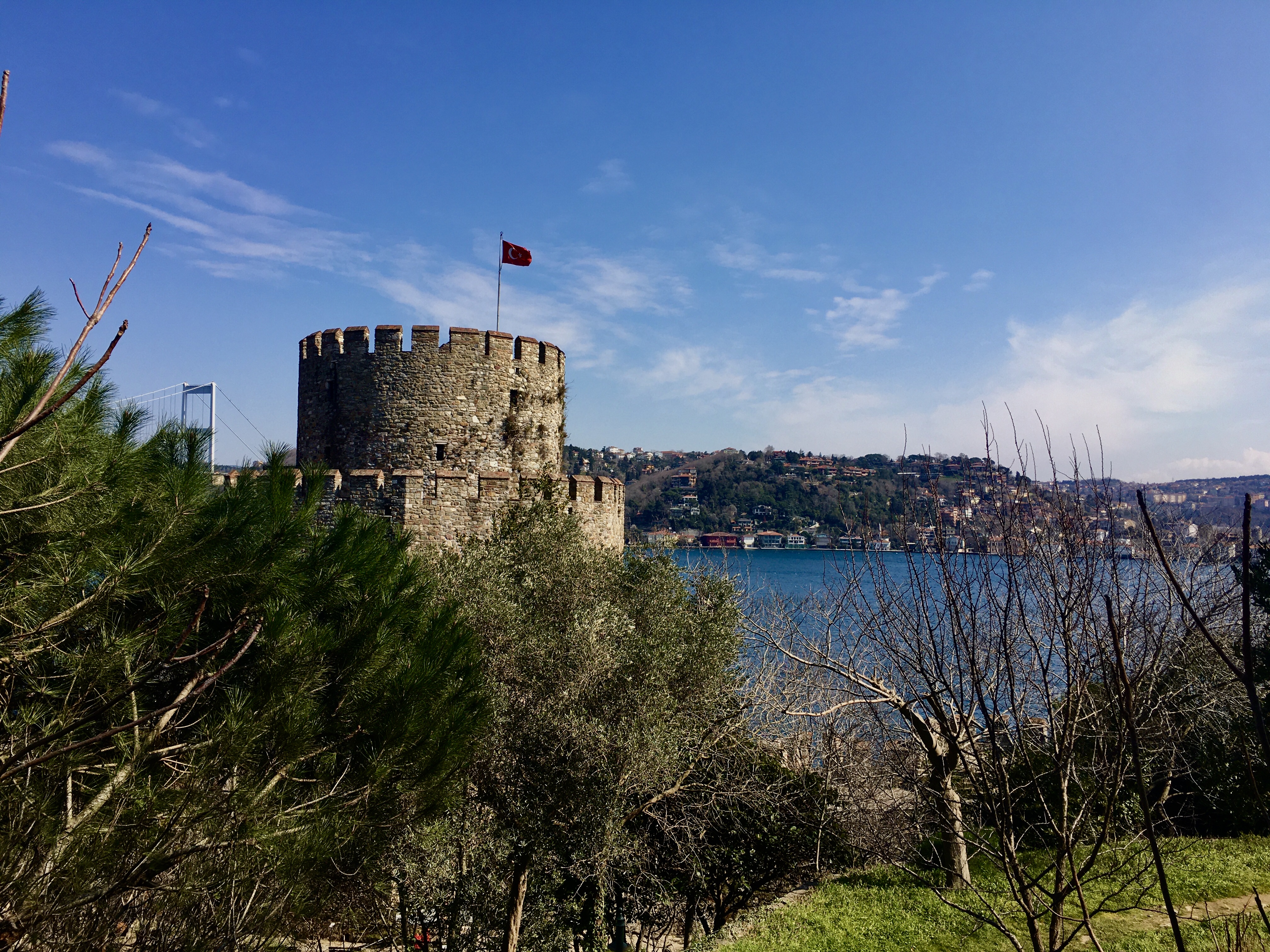
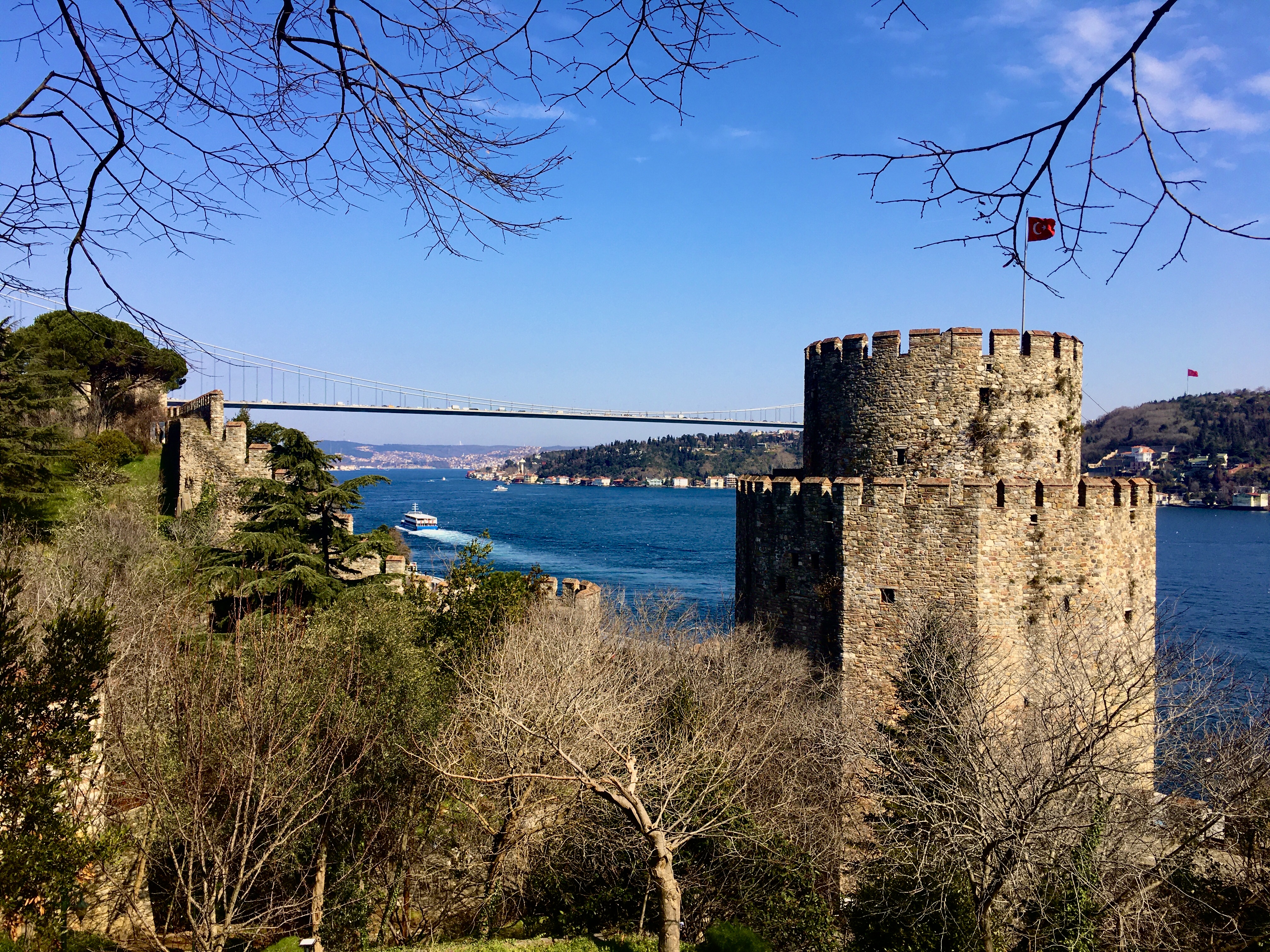
Zağanos Pasha was not the only person who relentlessly supported the young Sultan Mehmet II. He was greatly praised and backed by his beloved stepmother, Mara Branković (1416-1487) (Mara Despina Hatun in Turkish) who is an important historical figure in the Sultan’s life. Mara Branković was from the House of Branković of Serbia. She was the daughter of the Serbian Despot, Durad Branković, who had to keep his country on a treacherous line while acting as a vassal of the Ottomans and conspiring to assemble a Christian league against them at the same time. In 1431, Mara was bethrothed to Sultan Mehmet’s father, Sultan Murad II, as a peace offering by the Serbian despot. The wedding took place at the imperial palace in Edirne in 1435 where Mara Branković entered the Ottoman Imperial Harem. However, despite being one of the official wives of Murad II, she never converted to Islam and lived and died as an Orthodox Christian. By tradition, foreign women were not forced to denounce their original faiths in the Harem. On the other hand, converting to Islam evidently provided them with an improved status. Surprisingly, Mara was an exception. She was influencial, both during Sultan Murad II’s and his son’s reign while still remaining a Christian. Mara never bore a child which is the reason why some historians claim that the marriage was never consummated. Being childless, she instead acted as a second mother to the young prince, especially after his mother’s death. Mara and Sultan Mehmet II were very close from early on. Like Zağanos Pasha, she also encouraged Mehmet the Second for the conquest of Constantinople.

The Sultan deeply loved and respected his stepmother. When his father died and by tradition it was required to disolve his Harem, Mehmet II kept his stepmother in the palace giving her the title of Valide Sultan (the Queen Mother) which was the highest position any woman could attain in the palace. Sultan Mehmet II loved his stepmother so much that, in later years he donated her an estate in Ježevo (stated to be today’s Daphni), near Mount Athos. Furthermore, he gave her the full possession of several monasteries there together with all their revenues. Being an area that was strictly prohibited to females, it is said that Mara was the second female ever to enter the region freely. This is no wonder considering the fact that she had the Sultan behind her. She also had a great deal of freedom to travel between Constantinople, her homeland Serbia and Daphni. These were not just leisurely travels. Historical Venetian state records show that she also acted as a diplomat between the Ottomans and Venice. She was highly regarded and valued not only by the Sultan but by Venice as well. Diplomatic missions visited and consulted her in Daphni from where she would take the proposed peace treaties to Constantinople. It is generally thought that she contributed immensely to the peace treaty between the two states in 1479.
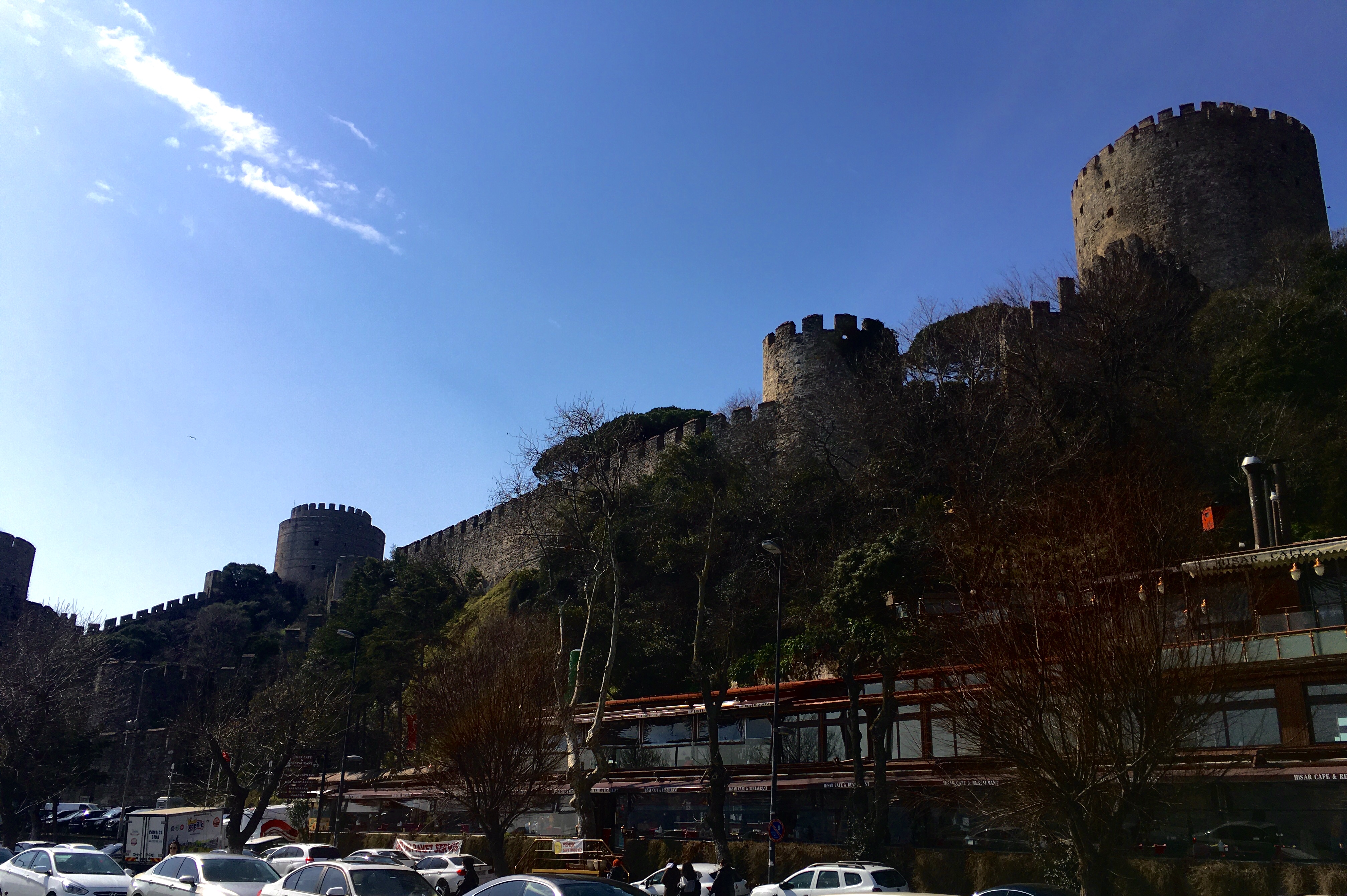
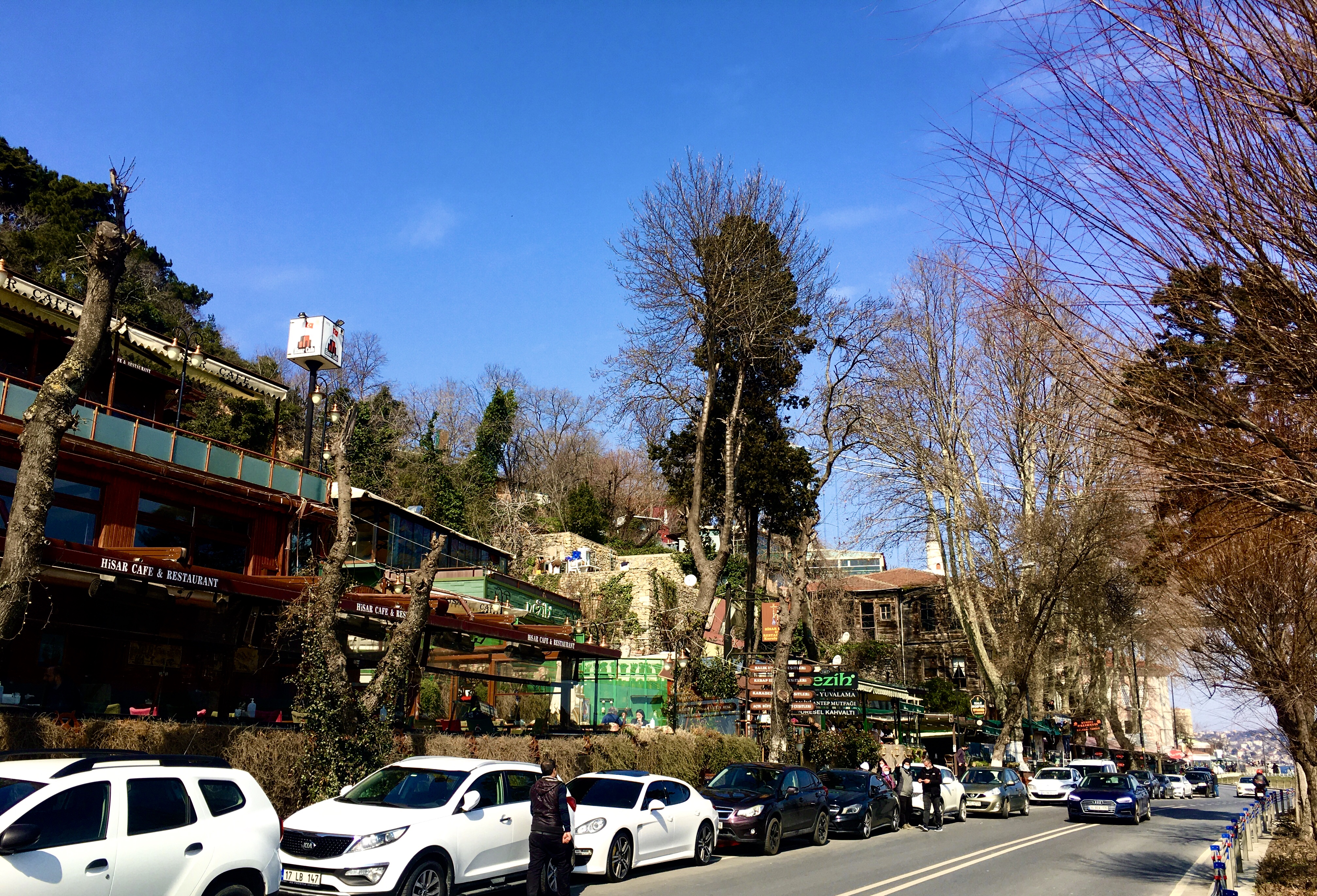
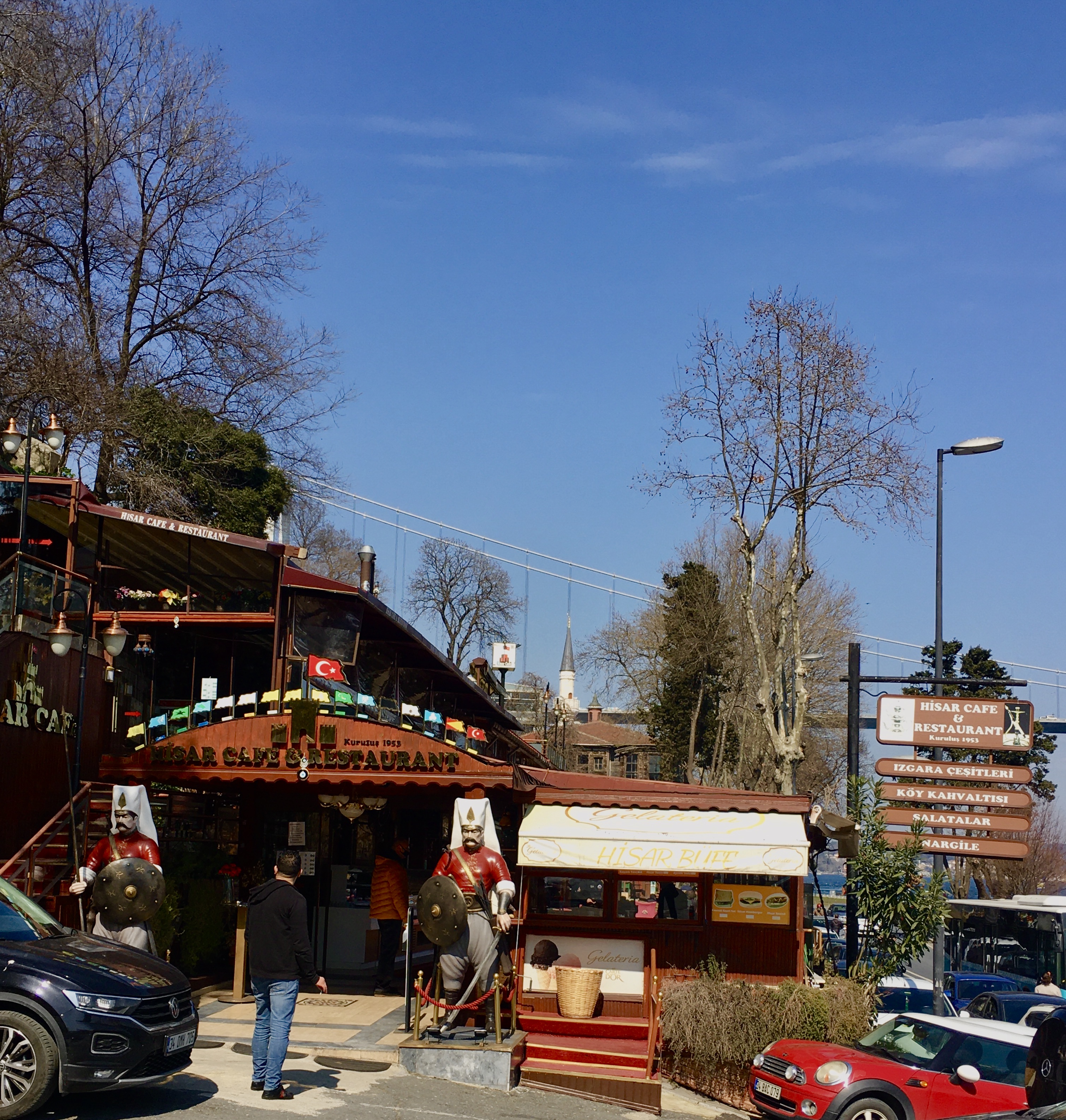
The Rumelia Castle offers a wonderful view of the Bosphorus and the shore across. Once you have seen the premises and taken some of the most iconic photos of Istanbul, you can give a break at one of the cafes along the Bosphorus. A traditional Turkish breakfast is highly recommended at one of these places by the shore. Breakfast is traditionally the most important meal of the day for Turks even if big city life makes it difficult to keep it up during the week. However, on week-ends the tradition is most certainly revived. You will see similar places all over the town, practically full with Turks who want to have a full, proper, Turkish breakfast. Those who can not go out, set a similar table at home. The menu covers a wide range of local cheese, green and black olives, jam, honey, kaymak (a creamy dairy product similar to clotted cream), butter, local deli products, tomatoes, cucumber, green pepper, bread, simit (often described as Turkish bagel but in my opinion is not so) and last but not least endless glasses of tea! Eggs are also a must in this menu. Among the egg choices, menemen, which is a kind of scrambled eggs with green pepper and tomatoes, is a very popular dish among Turks.
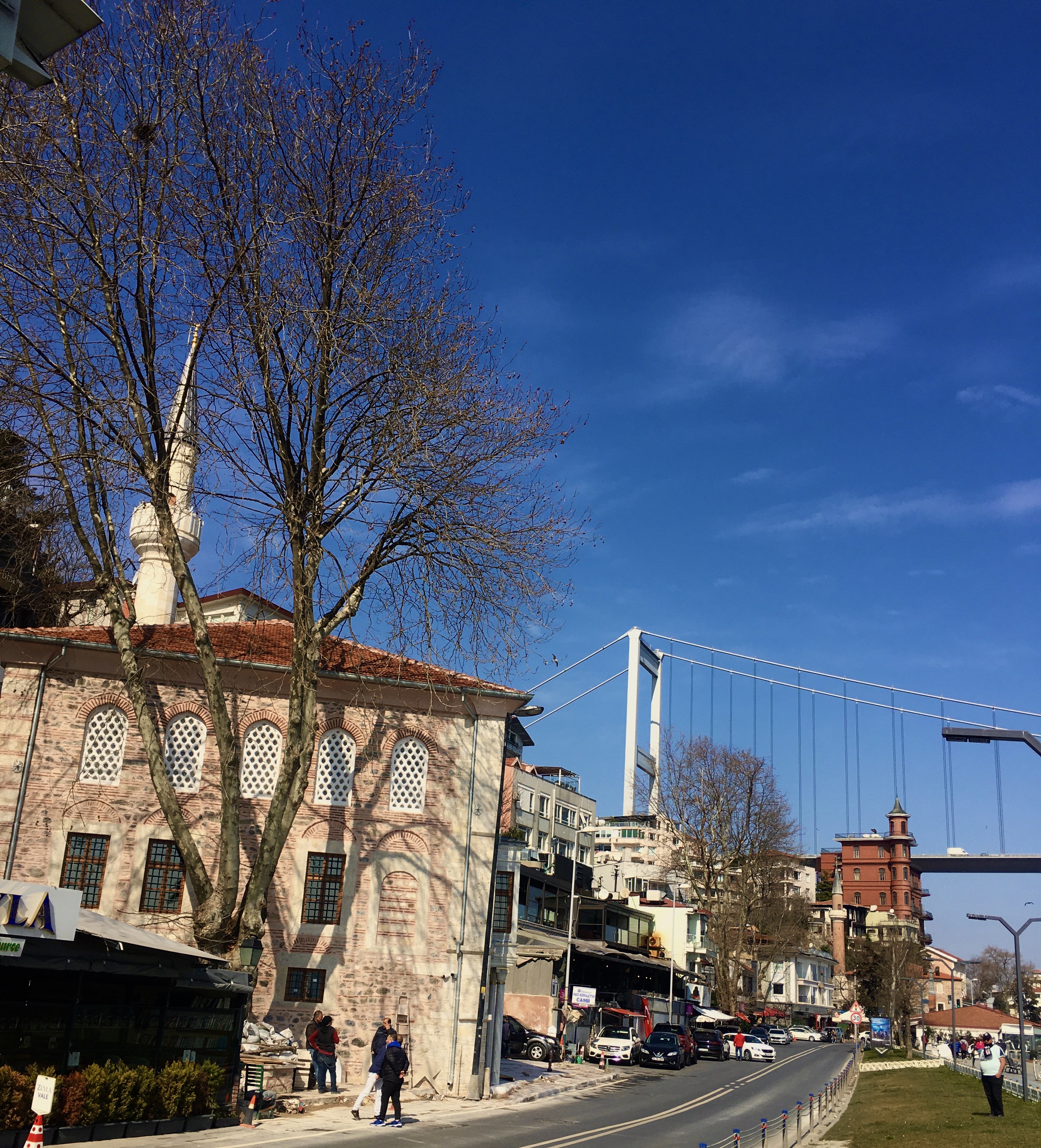
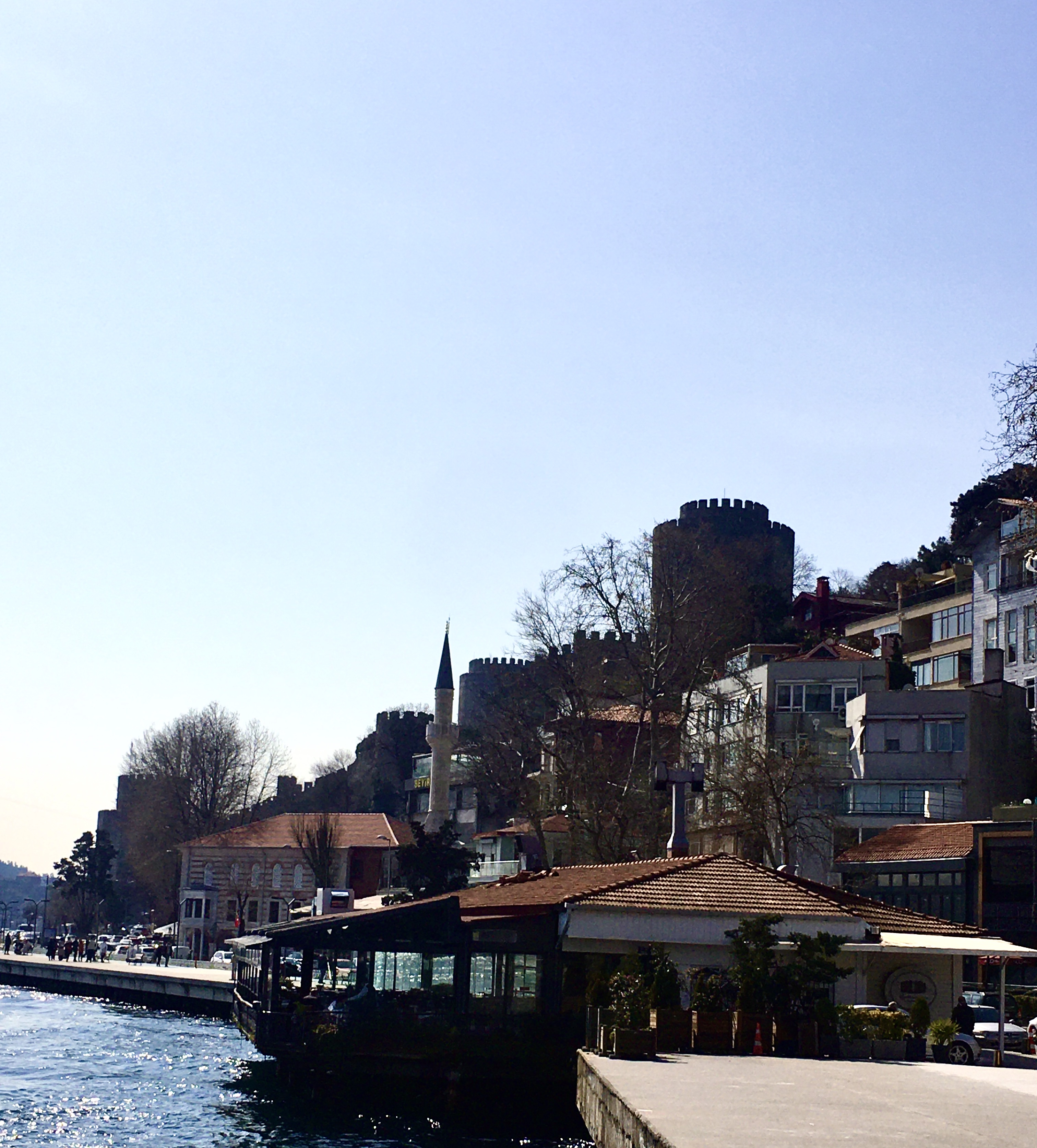
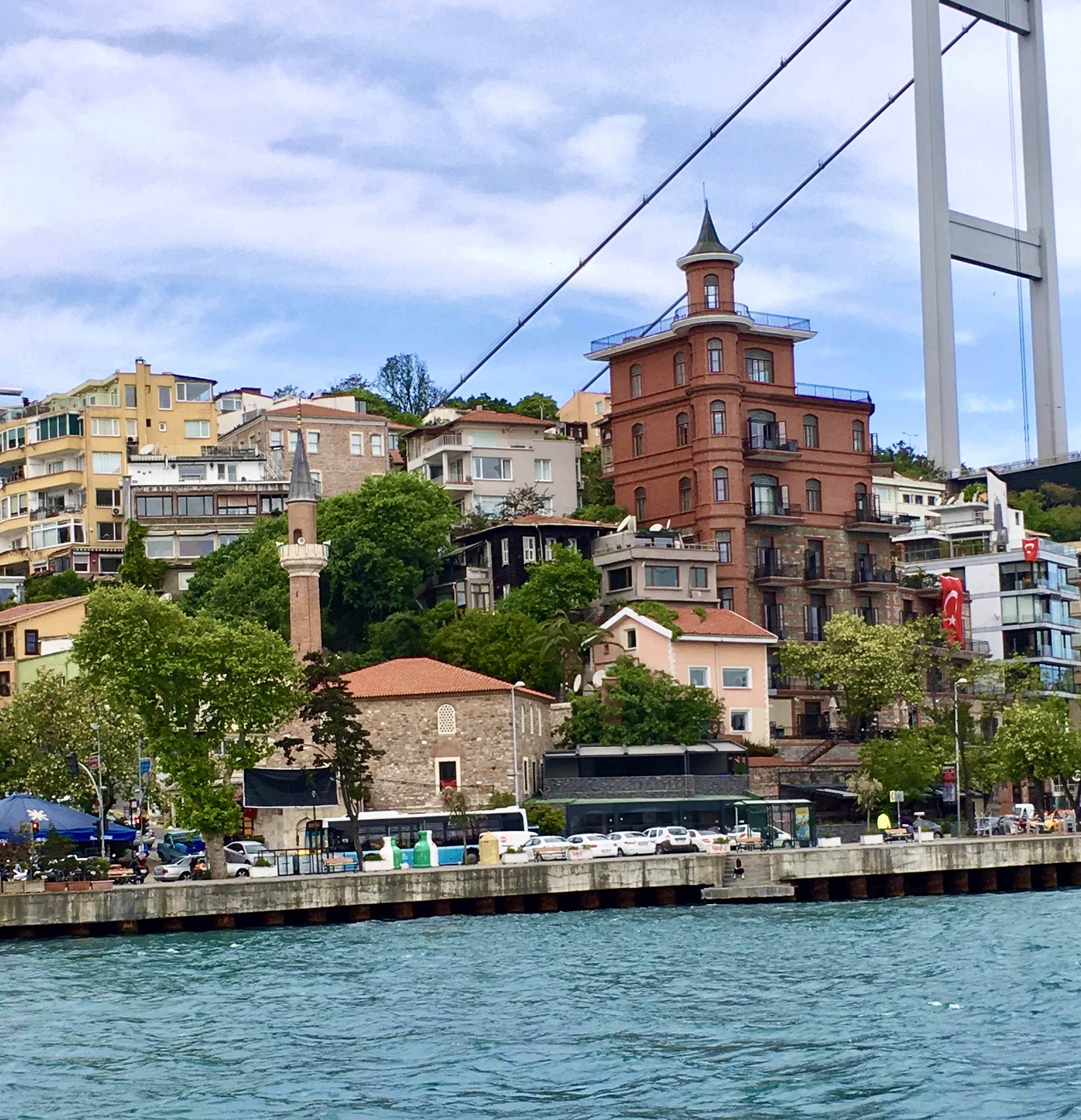
Once you are well rested, you can spare some time to stroll towards the once village (now a district) of Rumeli Hisarı. If you walk far enough you will encounter some interesting Ottoman mansions of the 19th century and two historical mosques. The first of these mosques is the Hacı Kemalettin Mosque built in 1743, during the reign of Sultan Mahmut I. The second one, closer to the bridge (the Fatih Sultan Mehmet Bridge), is the Ali Pertek Mosque. It was built in 1640 by Ali Pertek Bey who was an admiral in the Ottoman Navy. At this point, an unusual structure rising above the mosque will definitely catch your eye. This eccentric red building, which is often referred to as the Haunted Pavilion, is the Yusuf Ziya Pasha Pavilion. The construction of the building began circa 1910. At the time, Yusuf Ziya Pasha was the aide-de-camp of Abbas Hilmi Pasha, the Khedive of Egypt. The construction came to a stop when World War I started in 1914 because all the foremen and workers were conscripted into the Ottoman Army. The building stayed unfinished for more than a century. It was renovated at the turn of the 21st century and is currently being used as the headquarters of one of the leading Holdings of Turkey. The building is open to public on week-ends for the contemporary art collection of Borusan Holding.
